Bioactive Compounds
How to submit an article:
- Registered users can submit any published journal article that has a unique DOI (Digital Object Identifier) name or link to Research Hub.
- For example, you can paste the full DOI link:
https://doi.org/10.1109/5.771073or just the DOI name:10.1109/5.771073into the field above and click submit. - The person who is first to submit a valid article to Research Hub will forever be credited for it, and every article submission earns you +6 Research Points.
Related Topics
Published research studies are articles that present the findings of original research that has undergone a peer-review process and has been made publicly available in scholarly journals, books or other media.
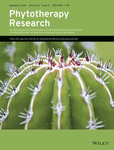
Anticancer and chemopreventive potential of Morinda citrifolia L. bioactive compounds: A comprehensive update
2024 Feb 15 Phytotherapy Research Kitic D, Miladinovic B, Randjelovic M, Szopa A, Seidel V, Prasher P, et al.
Systematic Review Anticancer NoniNoni fruit and its compounds demonstrate significant potential in cancer therapy by inducing apoptosis, arresting cell cycle, inhibiting angiogenesis, and modulating immune system.

The whole pomegranate (Punica granatum. L), biological properties and important findings: A review
2023 Oct Food Chemistry Advances Valero-Mendoza AG, Meléndez-Rentería NP, Chávez-González ML, Flores-Gallegos AC, Wong-Paz JE, Govea-Salas M, et al.
Review Article Pomegranate Antimicrobial AntiviralPomegranate and its by-products, particularly the peel, contain bioactive compounds with potential antimicrobial, anticancer and antiviral properties.

Bioactive compounds found in Cucumis sativus demonstrate optimal binding affinity to PTP1B.
2023 Oct 14 IPS Journal of Molecular Docking Simulations Ogunbiyi OE, , Ogunbiyi BT, Adeleke SO, Arietarhire LO, Alege PE, et al.
The analysis revealed that the bioactive compounds isoorientin, chlorogenic acid, isovitexin, caffeic acid, and ferullic acid from Cucumis sativus exhibited inhibitory potential against PTP1B, with scores ranging from -8.60 to -6.44 kcal/mol and MM-GBSA values ranging from -56.46 to -51.13 ΔGbind.
Experimental Study Cucumber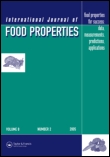
A comprehensive review on the availability of bioactive compounds, phytochemicals, and antioxidant potential of plum ( Prunus Domestica )
2023 Aug 23 International Journal of Food Properties Ayub H, Nadeem M, Mohsin M, Ambreen S, Khan F, Oranab S, et al.
Review Article Bone Health Blood Sugar Antioxidant PlumPlums, which are rich in bioactive compounds, antioxidants, and vitamins, can help maintain blood glucose level, bone health, heart health and even treat certain cancers.
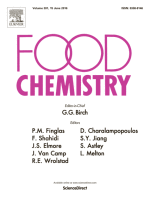
Humulus lupulus L. a potential precursor to human health: High hops craft beer
2023 Mar Food Chemistry González-Salitre L, Guillermo González-Olivares L, Antobelli Basilio-Cortes U
Different varieties of hops contain bioactive compounds with positive health benefits, such as antioxidant, anti-inflammatory, and antimicrobial properties, making them suitable for functional, nutraceutical, therapeutic, and pharmaceutical applications. The compounds in hops, particularly polyphenols, essential oils, and α and β acids, are of great industrial interest due to their association with flavor and aroma in beer production.
Review Article Anti-Inflammatory Antioxidant Hops BeerResearch insights are moderated by the Research Hub team and offer an at-a-glance overview of interesting research findings.

2024 Phytotherapy Research
Noni fruit and its compounds demonstrate significant potential in cancer therapy by inducing apoptosis, arresting cell cycle, inhibiting angiogenesis, and modulating immune system.
Systematic Review Anticancer Noni
Anticancer and chemopreventive potential of Morinda citrifolia L. bioactive compounds: A comprehensive update
Kitic D, Miladinovic B, Randjelovic M, Szopa A, Seidel V, Prasher P, et al.

2023 Food Chemistry Advances
Pomegranate and its by-products, particularly the peel, contain bioactive compounds with potential antimicrobial, anticancer and antiviral properties.
Review Article Antimicrobial Antiviral Pomegranate
The whole pomegranate (Punica granatum. L), biological properties and important findings: A review
Valero-Mendoza AG, Meléndez-Rentería NP, Chávez-González ML, Flores-Gallegos AC, Wong-Paz JE, Govea-Salas M, et al.

2023 International Journal of Food Properties
Plums, which are rich in bioactive compounds, antioxidants, and vitamins, can help maintain blood glucose level, bone health, heart health and even treat certain cancers.
Review Article Antioxidant Blood Sugar Bone Health Plum
A comprehensive review on the availability of bioactive compounds, phytochemicals, and antioxidant potential of plum (
Prunus Domestica
)
Ayub H, Nadeem M, Mohsin M, Ambreen S, Khan F, Oranab S, et al.

2023 Reference Series in Phytochemistry
Through innovative refinement, nanocurcumin, evolved from turmeric's primary component curcumin, has improved characteristics and pharmaceutical potential, particularly in drug delivery systems.
Review Article Biological Activities Turmeric
Bioactive Compounds and Biological Activities of Turmeric (Curcuma longa L.)
Jyotirmayee B, Nayak SS, Mohapatra N, Sahoo S, Mishra M, Mahalik G
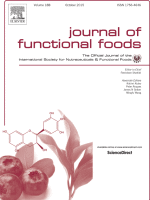
2022 Journal of Functional Foods
Carrot's bioactive compounds can regulate immune response, reduce oxidative stress, and prevent damaging oxidative destruction, making it a potential preventive tool for various diseases.
Review Article Anti-Inflammatory Carrot Immunomodulation Oxidative Stress
Critical review on the immunomodulatory activities of carrot’s β-carotene and other bioactive compounds
Anjani G, Ayustaningwarno F, Eviana R
Review Articles
Review articles summarise and critically evaluate the current state of research on a specific topic or field by synthesising multiple primary research studies.

Anticancer and chemopreventive potential of Morinda citrifolia L. bioactive compounds: A comprehensive update
2024 Feb 15 Phytotherapy Research Kitic D, Miladinovic B, Randjelovic M, Szopa A, Seidel V, Prasher P, et al.
Systematic Review Anticancer NoniNoni fruit and its compounds demonstrate significant potential in cancer therapy by inducing apoptosis, arresting cell cycle, inhibiting angiogenesis, and modulating immune system.

The whole pomegranate (Punica granatum. L), biological properties and important findings: A review
2023 Oct Food Chemistry Advances Valero-Mendoza AG, Meléndez-Rentería NP, Chávez-González ML, Flores-Gallegos AC, Wong-Paz JE, Govea-Salas M, et al.
Review Article Pomegranate Antimicrobial AntiviralPomegranate and its by-products, particularly the peel, contain bioactive compounds with potential antimicrobial, anticancer and antiviral properties.

A comprehensive review on the availability of bioactive compounds, phytochemicals, and antioxidant potential of plum ( Prunus Domestica )
2023 Aug 23 International Journal of Food Properties Ayub H, Nadeem M, Mohsin M, Ambreen S, Khan F, Oranab S, et al.
Review Article Bone Health Blood Sugar Antioxidant PlumPlums, which are rich in bioactive compounds, antioxidants, and vitamins, can help maintain blood glucose level, bone health, heart health and even treat certain cancers.

Humulus lupulus L. a potential precursor to human health: High hops craft beer
2023 Mar Food Chemistry González-Salitre L, Guillermo González-Olivares L, Antobelli Basilio-Cortes U
Different varieties of hops contain bioactive compounds with positive health benefits, such as antioxidant, anti-inflammatory, and antimicrobial properties, making them suitable for functional, nutraceutical, therapeutic, and pharmaceutical applications. The compounds in hops, particularly polyphenols, essential oils, and α and β acids, are of great industrial interest due to their association with flavor and aroma in beer production.
Review Article Anti-Inflammatory Antioxidant Hops Beer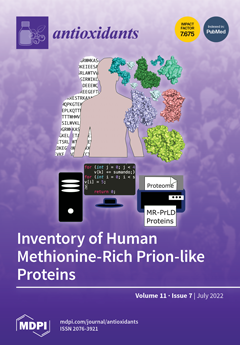
Bee Pollen as Functional Food: Insights into Its Composition and Therapeutic Properties
2023 Feb 23 Antioxidants El Ghouizi A, Bakour M, Laaroussi H, Ousaaid D, El Menyiy N, Hano C, et al.
The study concludes that bee pollen is a highly nutritious substance with a wide range of bioactive compounds and has potential therapeutic applications in the medical and food industries.
Review ArticleClinical Trials
Clinical trials are research studies that involve people and are conducted to evaluate the safety and efficacy of new treatments or interventions, such as drugs, medical devices, or behavioural therapies.
Study Protocols
Published study protocols are detailed plans that outline the objectives, methodology, statistical analyses, and organisation of a research study that have been made publicly available for others to review and use as a reference.
Presentation Slides

Systematic Review
Noni fruit and its compounds demonstrate significant potential in cancer therapy by inducing apoptosis, arresting cell cycle, inhibiting angiogenesis, and modulating immune system.
Kitic D, Miladinovic B, Randjelovic M, Szopa A, Seidel V, Prasher P, Sharma M, Fatima R, Arslan Ateşşahin D, Calina D, Sharifi‐Rad J

Review Article
Pomegranate and its by-products, particularly the peel, contain bioactive compounds with potential antimicrobial, anticancer and antiviral properties.
Valero-Mendoza AG, Meléndez-Rentería NP, Chávez-González ML, Flores-Gallegos AC, Wong-Paz JE, Govea-Salas M, Zugasti-Cruz A, Ascacio-Valdés JA

Review Article
Plums, which are rich in bioactive compounds, antioxidants, and vitamins, can help maintain blood glucose level, bone health, heart health and even treat certain cancers.
Ayub H, Nadeem M, Mohsin M, Ambreen S, Khan F, Oranab S, Rahim M, Zubair khalid M, Zongo E, Zarlasht M, Ullah S

Review Article
Through innovative refinement, nanocurcumin, evolved from turmeric's primary component curcumin, has improved characteristics and pharmaceutical potential, particularly in drug delivery systems.
Jyotirmayee B, Nayak SS, Mohapatra N, Sahoo S, Mishra M, Mahalik G

Review Article
Carrot's bioactive compounds can regulate immune response, reduce oxidative stress, and prevent damaging oxidative destruction, making it a potential preventive tool for various diseases.
Anjani G, Ayustaningwarno F, Eviana R
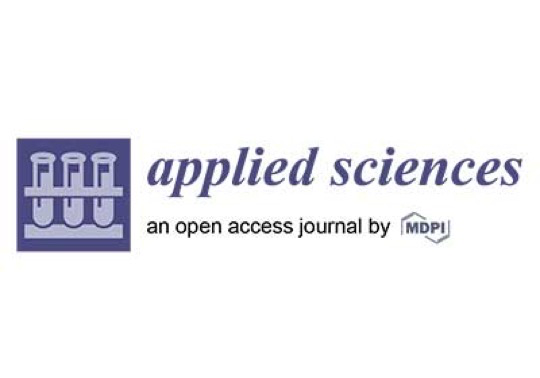
Review Article
Honey, owing to its bioactive compounds, demonstrates potential in treating COVID-19 symptoms by reducing oxidative damage and enhancing the immune system.
Soares S, Bornet M, Grosso C, Ramalhosa MJ, Gouvinhas I, Garcia J, Rodrigues F, Delerue-Matos C
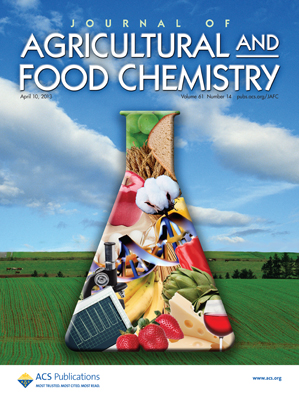
Review Article
Jujube nutrients may offer potential therapeutic benefits including antioxidant, antibacterial, anti-inflammatory functions, and improving sleep quality and learning.
Hua Y, Xu X, Guo S, Xie H, Yan H, Ma X, Niu Y, Duan JA
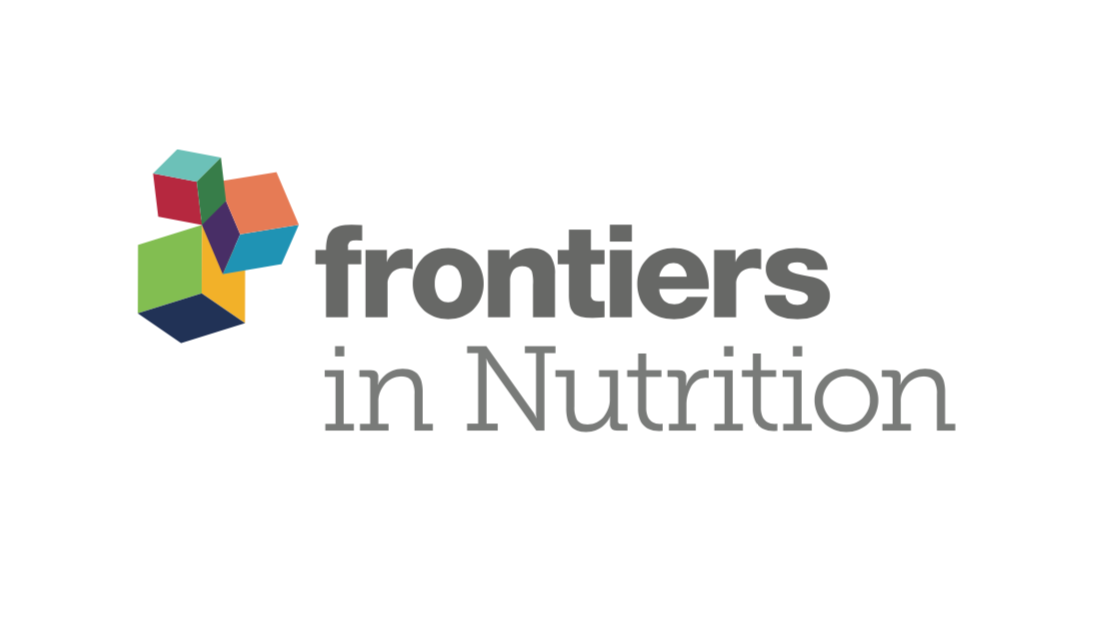
Review Article
The underutilized pomegranate peel, full of abundant bioactive substances, could be repurposed for its potential health benefits like anti-inflammatory, anti-cancer, cardiovascular protection, and antibacterial activities.
Mo Y, Ma J, Gao W, Zhang L, Li J, Li J, Zang J

Review Article
Saffron plant's various parts contain bioactive compounds that, when extracted using innovative techniques, show significant potential for use in food, nutraceutical and drug formulations.
Bakshi RA, Sodhi NS, Wani IA, Khan ZS, Dhillon B, Gani A

Review Article
Purple carrot roots, rich in bioactive compounds like anthocyanin, may be effective in preventing metabolic syndrome and cancer by reducing inflammation and metabolic changes.
Rasheed H, Shehzad M, Rabail R, Kowalczewski P, Kidoń M, Jeżowski P, Ranjha MMAN, Rakha A, Din A, Aadil RM
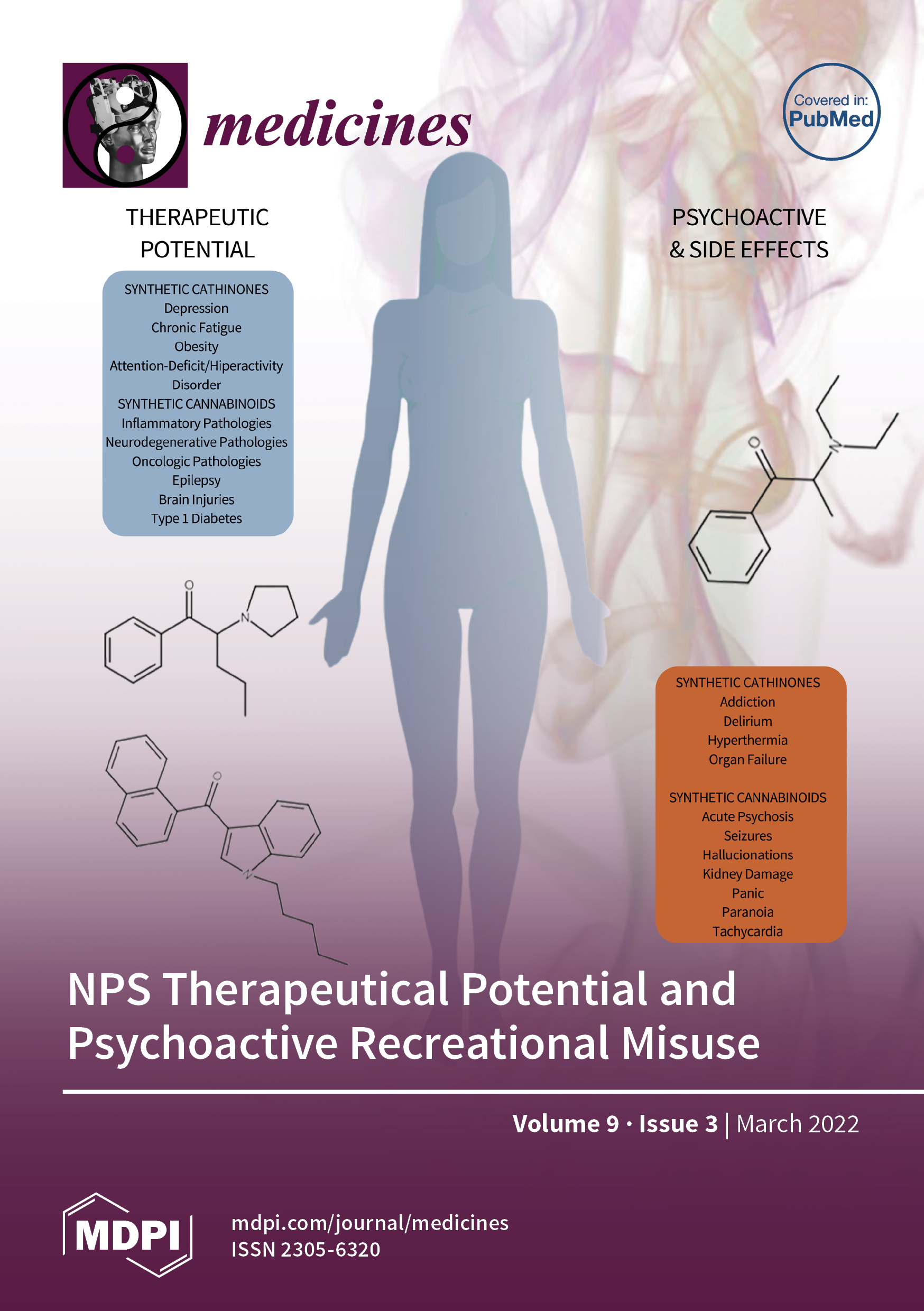
Systematic Review
Wen Dan Tang potentially treats neurological, psychiatric disorders, cardiovascular diseases, and digestive disorders, and might improve life quality in headache patients.
Pradhan SK, Li Y, Gantenbein AR, Angst F, Lehmann S, Shaban H
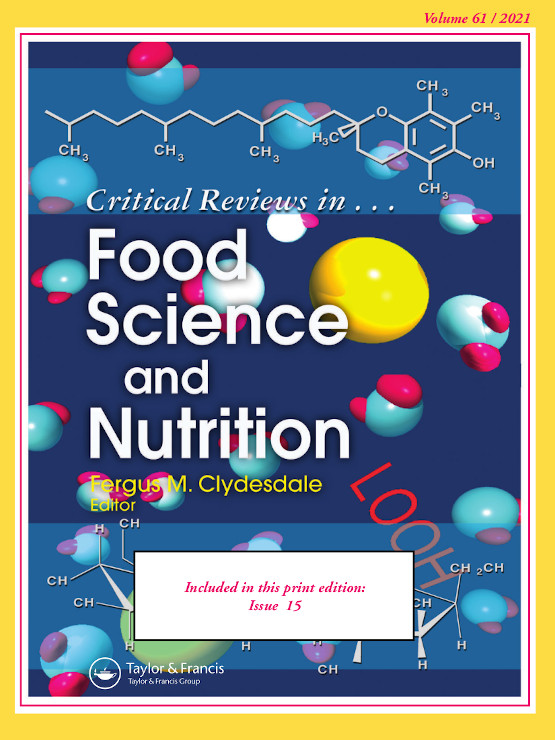
Review Article
Modern extraction techniques improve the extraction of bioactive compounds from black soybeans, which have potential use in functional foods and nutraceutical components.
Kumar M, Suhag R, Hasan M, Dhumal S, Radha , Pandiselvam R, Senapathy M, Sampathrajan V, Punia S, Sayed AAS, Singh S, Kennedy JF
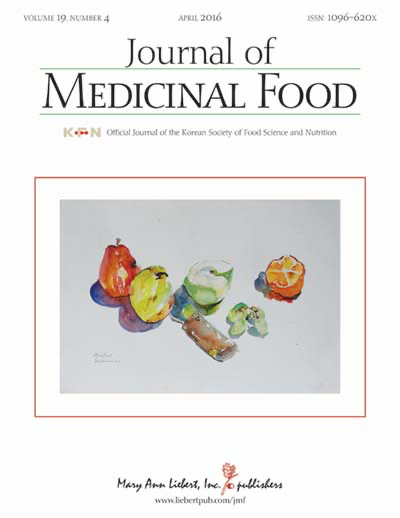
Systematic Review
Raspberry consumption can help to reduce blood glucose levels and stabilize the blood lipid profile due to its bioactive compounds.
Piña-Contreras N, Martínez-Moreno AG, Ramírez-Anaya JDP, Espinoza-Gallardo AC, Valdés EHM
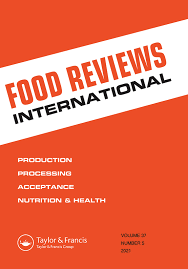
Review Article
Date palm tree products and by-products are exceptionally rich in bioactive compounds offering potential health benefits, therefore suitable to be used as natural ingredients in food manufacturing.
Echegaray N, Gullón B, Pateiro M, Amarowicz R, Misihairabgwi JM, Lorenzo JM

Review Article
Bee honey and propolis could have potential beneficial effects as supporting treatments for COVID-19, enhancing immunity and inhibiting viral activity.
Ali AM, Kunugi H
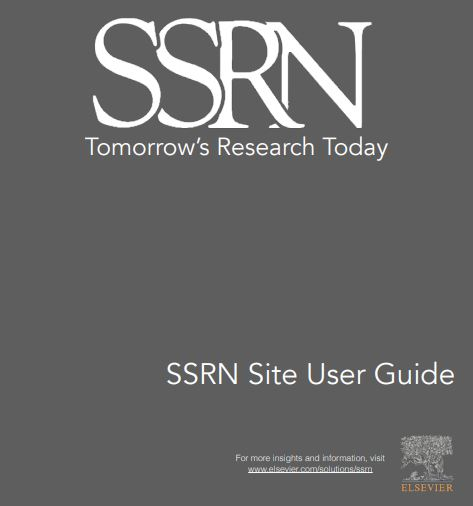
Review Article
Phytochemicals in carrots, particularly carotenoids, are effective at reducing eyesight degeneration and treating chronic eye defects due to their antioxidant and anti-inflammatory properties.
Taiwo EA, Abdulkareem TT, Fajemisin E

Review Article
Regular coffee consumption, due to its bioactive compounds, may have protective effects against chronic disorders and certain neurodegenerative conditions.
Socała K, Szopa A, Serefko A, Poleszak E, Wlaź P

Review Article
Pumpkin seeds carry bioactive compounds with antidiabetic, antidepressant, antioxidant, antitumor, and cytoprotective activities, also aiding in microbiological infections and specific organ disorders.
Dotto JM, Chacha JS

Review Article
Honey's phytochemical components and bioactive compounds have potential antiviral effects, potentially making it an effective natural product against COVID-19.
Al-Hatamleh MAI, Hatmal MM, Sattar K, Ahmad S, Mustafa MZ, Bittencourt MDC, Mohamud R

Review Article
Pomegranate possesses significant biological and nutraceutical value with potential applications against a wide spectrum of diseases due to its rich phytochemical composition.
Caruso A, Barbarossa A, Tassone A, Ceramella J, Carocci A, Catalano A, Basile G, Fazio A, Iacopetta D, Franchini C, Sinicropi MS
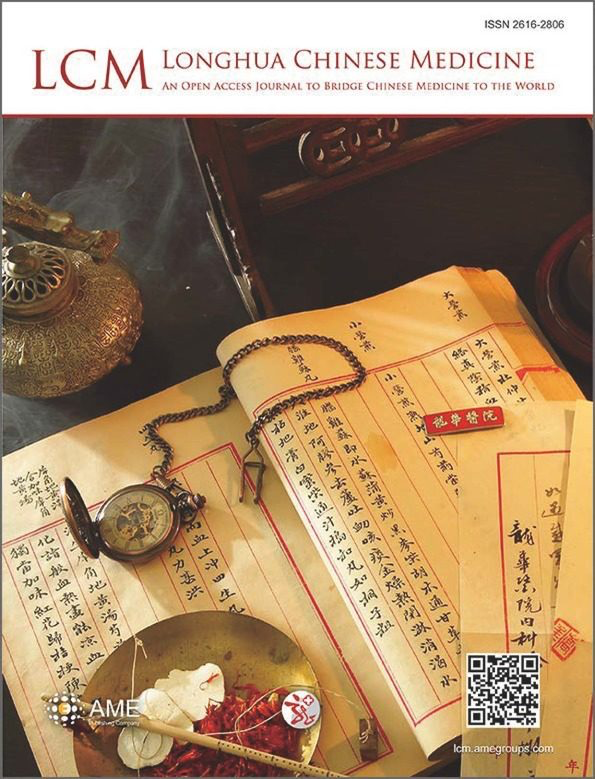
Review Article
Green tea and its compounds, especially catechins, may potentially prevent and treat osteoarthritis due to their potent antioxidant and anti-inflammatory properties.
Barbalho SM, Goulart RA, Buglio DS, Araujo AC, Guiguer EL
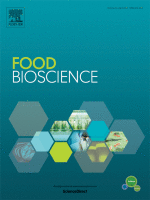
Review Article
Different varieties of dates pose impressive nutritional profiles and exhibit multiple health benefits, including anti-cancer, anti-inflammatory, and cholesterol lowering potential.
Hussain MI, Farooq M, Syed QA

Review Article
Bioactive compounds found in avocado waste products exhibit various biological properties, with potential applications in the food and pharmaceutical industries.
Jimenez P, Garcia P, Quitral V, Vasquez K, Parra-Ruiz C, Reyes-Farias M, Garcia-Diaz DF, Robert P, Encina C, Soto-Covasich J

Review Article
Avocado's nutritional and therapeutic properties show potential for novel drug discovery in prevention and treatment of prevalent diseases such as cancer, diabetes, and cardiovascular issues.
Bhuyan , Alsherbiny , Perera , Low , Basu , Devi , Barooah , Li , Papoutsis

Review Article
Cocoa and cocoa products, enriched with polyphenols, have potential health benefits including enhanced vascular function, cancer prevention, and improvement in learning and memory.
E S, Panjikkaran ST, L SC, R RP

Systematic Review
The mung bean has been documented to ameliorate hyperglycemia, hyperlipemia, and hypertension, and prevent cancer and melanogenesis, as well as possess hepatoprotective and immunomodulatory activities.
Hou, D., Yousaf, L., Xue, Y., Hu, J., Wu, J., Hu, X., Feng, N., & Shen, Q. (2019).

Systematic Review
Bioactive compounds present in different parts of radishes, such as leaves, sprouts, stem and roots, act on a variety of potential drug targets associated with ailments, such as cancer, inflammation, liver injury and diabetes.
Abinaya ManivannanOrcID,Jin-Hee Kim,Do-Sun Kim,Eun-Su Lee andHye-Eun Lee

Systematic Review
Black pepper, beyond its culinary use, offers medicinal benefits like antimicrobial, antioxidant, anticancer, anti-diabetic, and anti-inflammatory properties mainly attributed to the compound piperine.
Takooree H, Aumeeruddy MZ, Rengasamy KRR, Venugopala KN, Jeewon R, Zengin G, Mahomoodally MF
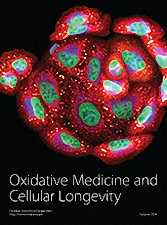
Systematic Review
The health benefits of goji berries include enhancing hemopoiesis, antiradiation, antiaging, anticancer, improvement of immunity, and antioxidation.
Zheng Feei Ma, Hongxia Zhang, Sue Siang Teh, Chee Woon Wang, Yutong Zhang, Frank Hayford, Liuyi Wang, Tong Ma, Zihan Dong, Yan Zhang, Yifan Zhu,

Systematic Review
Goji berries, rich in antioxidants, confer health benefits including protection against aging, cancer, and radiation, as well as enhancing immunity and blood production.
Zheng Feei Ma, Hongxia Zhang, Sue Siang Teh, Chee Woon Wang, Yutong Zhang, Frank Hayford, Liuyi Wang, Tong Ma, Zihan Dong, Yan Zhang, Yifan Zhu,
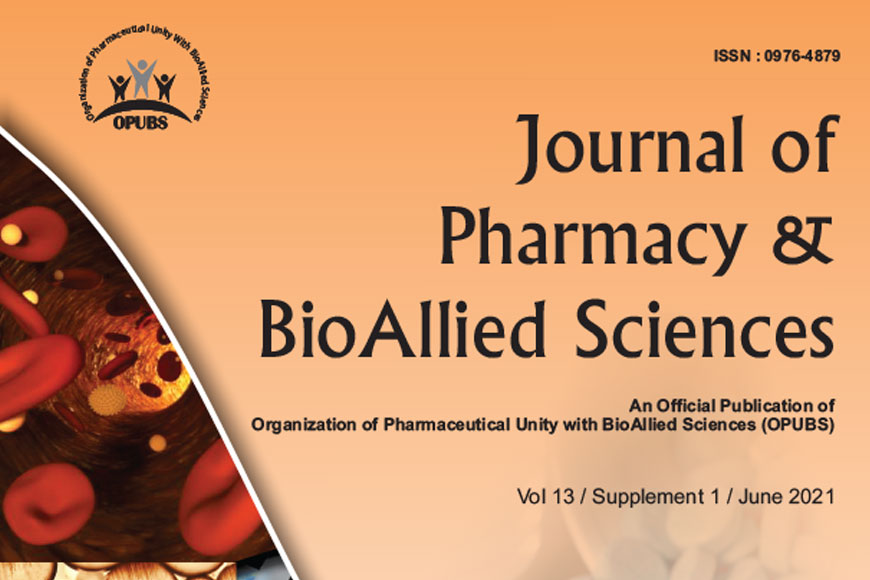
Review Article
Saffron possesses major bioactive compounds such as safranal, crocin, and picrocrocin that are hypothesized to be integral to its antidepressant effects.
Siddiqui MJ, Saleh MSM, Basharuddin SNBB, Zamri SHB, Mohd Najib MH, Che Ibrahim MZ, binti Mohd Noor NA, Binti Mazha HN, Mohd Hassan N, Khatib A
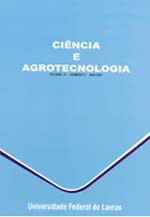
Experimental Study
Adzuki beans present anti-atherogenic, anti-thrombogenic and hypocholesterolemic effects, and the ratios PUFA: SFA and n-6:n-3 were considered appropriate for biological system maintenance of a healthy organism.
Hou D, Yousaf L, Xue Y, et al.

Experimental Study
The ethanol extract of FCI potentially counters bone loss in mice by enhancing osteoblast proliferation and differentiation, facilitated by multiple bioactive compounds.
Li J, Lin X, Zhang Y, Liu W, Mi X, Zhang J, Su J

Systematic Review
Goji berry was identified as a rich source of antioxidant compounds, with health-promoting properties comparable with other common fruit species.
D. Donno, G.L. Beccaro, M.G. Mellano, A.K. Cerutti, G. Bounous

Systematic Review
The antioxidants present in goji berries have comparable health-promoting properties to those found in other common fruits.
D. Donno, G.L. Beccaro, M.G. Mellano, A.K. Cerutti, G. Bounous
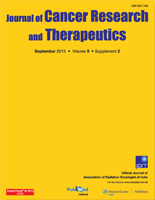
Review Article
Among the bioactive compounds present in jujube fruit, triterpenic acids and polysaccharides have antiproliferative and anticancer effects on various cancer cell lines.
Zoya Tahergorabi, Mohammad Reza Abedini, Moodi Mitra, Mohammad Hassanpour Fard, and Hossein Beydokhti

Systematic Review
The bioactive components and biological activities were superior for green (unripe) jujube fruit (as pulp and seed) compared to the ripe fruit.
Sirithon Siriamornpuna, NatthidaWeerapreeyaku, Sahapat Barusrux
Executive Summary
Write an executive summary in the form of a blog article on the topic of "Research into Chinese medicine treatment for Bioactive Compounds" summarising the research below and using language that can be easily understood by patients and avoiding medical jargon using a professional and caring tone of voice.
Write an executive summary in the form of a blog article on the topic of "Researched Chinese medicine treatments for Bioactive Compounds" summarising the research below in an objective and easy to understand way, and using language that can be easily understood by patients. Group the article into Chinese medicine treatments first, followed by nutrition and other treatments. Avoid using medical jargon and use a professional and caring tone of voice.
Write me a concise but easy to understand executive summary on the topic of "Chinese medicine treatments for Bioactive Compounds" based on the following research that I will give you. Your summary should be 2 paragraphs long in Australian English spelling and include references to the studies.
A Systematic Review published in 2024 in the journal Phytotherapy Research found that Noni fruit and its compounds demonstrate significant potential in cancer therapy by inducing apoptosis, arresting cell cycle, inhibiting angiogenesis, and modulating immune system. In this study, a systematic review was put forth to scrutinize the therapeutic effectiveness of Morinda citrifolia L., commonly known as Noni, specifically looking into its effects on various forms of cancer. The review employed an extensive search of various scientific databases to gather relevant literature. This included both in vitro and in vivo studies, as well as clinical trials, specifically focusing on the outcomes of Noni fruit and its phytoconstituents - anthraquinones, flavonoids, sugar derivatives, and neolignans - on cancer. A carefully structured keyword and criteria search ensured a robust collection and analysis of data. The plethora of studies compiled point out to Noni's complex role in cancer therapy, underlining its various bioactive elements and their methods of activity. Significant anticancer and chemopreventive potential of Noni was observed, establishing it as potentially a safe and effective option in cancer prevention and treatment.
A Review Article published in 2023 in the journal Food Chemistry Advances found that Pomegranate and its by-products, particularly the peel, contain bioactive compounds with potential antimicrobial, anticancer and antiviral properties. In the methodological approach of the study, a comprehensive review was undertaken to collate information on the bioactive components found within pomegranates and their by-products (aril, seed, and peel). The study emphasized the pomegranate peel's properties owing to its high content of the bioactive compounds. The aim was to elucidate the nutritional and functional aspects of pomegranates, particularly as a functional food. The results outlined that pomegranates, especially their peel, contain bioactive compounds, including punicalagin, punicalin, ellagic acid, punicic acid, and anthocyanins. Therefore, they have potential functional properties such as antimicrobial, anticancer, and antiviral characteristics. These results suggest that pomegranates could be explored to develop nutraceutical or functional food products due to their profound properties. The peel of the pomegranate, specifically, showcases significant potential for development due to its higher bioactive compound content compared to other parts of the fruit.
A Review Article published in 2023 in the journal International Journal of Food Properties found that Plums, which are rich in bioactive compounds, antioxidants, and vitamins, can help maintain blood glucose level, bone health, heart health and even treat certain cancers. The research explored the health benefits and medicinal effects of plums, a common fruit belonging to the Prunus genus. The study focused not only on their consumption as a food source but also their uses in beverages. Special attention was given to the polyphenolic compounds, bioactive compounds, and antioxidants inherent in plums, such as phenolic acids, anthocyanins, carotenoids, and various organic acids, alongside an array of necessary minerals and vitamins. Apart from detailing traditional nutritional components, the study analyzed the unique constituents of plums like caffeic acid, chlorogenic acid and other phenolic compounds which contribute to its antioxidant property. The broader health benefits provided by these compounds spanning bone health, cardiovascular health, blood glucose stabilization, and potential impacts on gastrointestinal diseases were studied, with a particular emphasis on their possible role in the prevention and treatment of heart disease and specific kinds of cancer: lung and oral. The role of plums' low fat and high dietary fibre content in heart disease prevention was of special focus.
A Review Article published in 2023 in the journal Reference Series in Phytochemistry found that Through innovative refinement, nanocurcumin, evolved from turmeric's primary component curcumin, has improved characteristics and pharmaceutical potential, particularly in drug delivery systems. The methodology of the research involved analyzing the cultivation, storage, and surrounding environmental factors crucial to turmeric production, such as soil condition and climate. This was intertwined with investigations into the chemical composition of turmeric, focusing mainly on curcumin, its main component. Moving forward, the study then evaluated curcumin analogs and formulations, leading to a deep dive into the relatively new development of nanocurcumin. The discussion of the research results revealed several interesting findings. Firstly, turmeric exhibited a variety of useful properties, highlighting its role in traditional medicine and livelihood in Indian tribes. Most importantly, the research concluded the impressive potential of nanocurcumin. This altered form of curcumin showed not only enhanced characteristics but also possible applications in the pharmaceutical field, specifically for drug delivery systems.
A Review Article published in 2022 in the journal Journal of Functional Foods found that Carrot's bioactive compounds can regulate immune response, reduce oxidative stress, and prevent damaging oxidative destruction, making it a potential preventive tool for various diseases. In this literature review, mechanisms were proposed for how the antioxidant properties of carrot’s β-carotene and other bioactive compounds, such as phenolic acid, flavonoid, polyacetylene, and ascorbic acid could modulate the immune system. These proposals were centered around three main paths: anti-inflammatory response modulation, antioxidant response modulation, and overall immune response modulation (which involves both innate and adaptive responses). In the discussion of results, it was revealed that the bioactive compounds in carrots have the ability to regulate pro-inflammatory and anti-inflammatory cytokines, and are also capable of reducing oxidative stress. This was shown by the decrease in the accumulation of reactive oxygen species and an increase in antioxidant capacity, which collaboratively helps to minimize destructive oxidative destruction. Additionally, these compounds influenced immune components, specifically via the regulation of leukocytes, antigens, immunoglobulins, and histamine levels. As a result, carrots were defined as a functional food source capable of immune modulation and potential prevention and treatment for a range of diseases.
A Review Article published in 2022 in the journal Applied Sciences found that Honey, owing to its bioactive compounds, demonstrates potential in treating COVID-19 symptoms by reducing oxidative damage and enhancing the immune system. The review outlines the SARS-CoV-2 virus's mechanisms of action, which is responsible for COVID-19, offering a comprehensive understanding. It also explores the various bioactive assets honey has at its disposal, primarily focusing on its beneficial properties. The discussion elaborates on the potentials of honey's biological properties, especially its antioxidant and anti-inflammatory activities. These characteristics of honey, as suggested by the review, could contribute to the relief of oxidative damage and boost the immune system, thereby proving beneficial in combating viral infections, including COVID-19.
A Review Article published in 2022 in the journal Journal of Agricultural and Food Chemistry found that Jujube nutrients may offer potential therapeutic benefits including antioxidant, antibacterial, anti-inflammatory functions, and improving sleep quality and learning. The methodology used for this study involves a comprehensive review of existing research about Wild jujube, giving particular focus on its phytonutrients, biological functions, metabolism of bioactive compounds, and applications. The study does not seem to detail a specific experimental procedure, but instead bases its conclusions on existing literature. Various parts of the wild jujube plant, such as the fruits, seeds and leaves, were examined for their potential role as food, medicine, or health care aids. The results from the review suggest that the different parts of the wild jujube plant play many roles. The fruits have been noted for their antioxidant, antibacterial, and anti-inflammatory properties, and as ingredients preventing aging. The mature seeds have been found to have potential beneficial effects on central nervous system diseases, particularly in the treatment of insomnia and the enhancement of learning and memory.
A Review Article published in 2022 in the journal Frontiers in Nutrition found that The underutilized pomegranate peel, full of abundant bioactive substances, could be repurposed for its potential health benefits like anti-inflammatory, anti-cancer, cardiovascular protection, and antibacterial activities. This paper conducts a miniature review of the characterization and physiological functions of the key bioactive compounds present in pomegranate peel. The exploration underscores the main phenolic compounds in the peel, illustrating substances such as tannins, flavonoids, phenolic acids, dietary fibers, alkaloids, minerals, and vitamins. A deep understanding of these components and their potential benefits is vital to the study and future applications. The research finds that these core components essentially function as antioxidants, either enhancing oxidative biomarkers or proactively neutralizing reactive oxygen species. By establishing these key functions, it essentially links these activities to a broader context of benefits, including but not limited to anti-inflammatory, anti-cancer, cardiovascular protection, and antibacterial attributes, thereby indicating a potential for substantial health benefits. With comprehensive understanding and appropriate application of these substances, the pomegranate peels, often classified as waste, could find a new life as robust health-enhancing elements.
A Review Article published in 2022 in the journal Applied Food Research found that Saffron plant's various parts contain bioactive compounds that, when extracted using innovative techniques, show significant potential for use in food, nutraceutical and drug formulations. The methodology applied in this research involved the qualitative and quantitative analysis of the bioactive components within the saffron plant, with particular focus on apocarotenoids, anthocyanins, flavonoids, and phenolic compounds. Advanced extraction techniques were employed for increased yield and purity, notably supercritical fluid extraction, microwave assisted extraction, pulsed electric field, and high hydrostatic pressure extraction. These methods lead to a broad range of bioactives predomniantly from the plant's stigma. The findings indicated that all parts of the saffron plant were rich in bioactive compounds. The extracted bioactive compounds presented increased stability, bioavailability, and target delivery when examined via several encapsulation techniques. Beyond this, the extraction has allowed for investigation into the food and pharmaceutical applications of these bioactive components from the saffron plant. However, the utilization of these bioactive components, specifically from saffron floral biomass like petals and corm parts, using techniques such as supercritical fluid extraction, pulsed electric field, and emulsion liquid membrane extraction has not been thoroughly investigated.
A Review Article published in 2022 in the journal Applied Sciences found that Purple carrot roots, rich in bioactive compounds like anthocyanin, may be effective in preventing metabolic syndrome and cancer by reducing inflammation and metabolic changes. The methodology employed in the research deeply studies the role of purple carrot’s main bioactive compounds against metabolic syndrome and cancer. The main focus lies on anthocyanin, a phenolic compound present in purple carrot roots. This natural food source was shifted towards as a healthier nutritional approach instead of dietary supplements. The research leans on the effectiveness of these compounds in evading or delaying the onset of cardiovascular diseases, obesity, diabetes, and cancer by inhibiting inflammatory effects. The discussion primarily surrounds the role of bioactive compounds found in purple carrots, specifically anthocyanin, in their potential prevention of metabolic syndrome and cancer. The study focused on how these components could disrupt the onset of cardiovascular disease, obesity, diabetes, and similar health issues. The results suggest that these compounds were successful in decreasing metabolic changes and inflammation. It has been suggested that purple carrots' inherent components might serve as a major tool in the prevention and treatment of metabolic syndrome and cancer.
A Systematic Review published in 2022 in the journal Medicines found that Wen Dan Tang potentially treats neurological, psychiatric disorders, cardiovascular diseases, and digestive disorders, and might improve life quality in headache patients. The methodology of the study included the utilization of various online databases like PubMed, Medline, Cochrane Library, AcuTrials, Embase, Semantic Scholar, Jstor, and internet research. The study also involved reviewing ancient and modern Chinese medical textbooks. The research noted that while there were no dedicated studies on Wen Dan Tang in the context of migraine and tension-type headaches, it gathered and examined data for each compound found in the formula. The discussion of the results revealed the therapeutic potential of the bioactive compounds present in Wen Dan Tang. This was especially in the case of patients with neurological and psychiatric disorders, cardiovascular diseases, metabolic syndrome, and digestive disorders. Additionally, the correlations between Wen Dan Tang and the reduction of headaches were explored. A potential improvement in the quality of life was highlighted, especially for patients suffering from migraines and tension-type headaches.
A Review Article published in 2022 in the journal Critical Reviews in Food Science and Nutrition found that Modern extraction techniques improve the extraction of bioactive compounds from black soybeans, which have potential use in functional foods and nutraceutical components. These modern extraction techniques involve the application of technologies such as microwaves, ultrasounds, and enzymes. Contrary to traditional methods that depend on simple yet toxic solvents, these contemporary options yield higher amounts of bioactive substances from black soybeans, are quicker, and are less damaging to the environment. The exact bioactive compounds extracted include anthocyanins, phenolic acids, isoflavones, and flavones, among others. Researchers discovered that black soybeans, and specifically their seed coat, are rich in various bioactive compounds. These compounds have been reported to possess numerous health benefits, showing antioxidant, anti-cancer, anti-diabetic, anti-obesity, anti-inflammatory, cardio and neuroprotective activities. The study also explores how these soybean extracts have been used in the manufacture of food products like noodles, in the development of biodegradable films with pH sensitivity, and in therapeutic applications such as promoting wound healing and alleviating inflammation. The comprehensive review, therefore, serves as a handy reference for food manufacturers and scientists, showcasing the vast potential of black soybeans in the development of functional foods and nutraceuticals.
A Systematic Review published in 2022 in the journal Journal of Medicinal Food found that Raspberry consumption can help to reduce blood glucose levels and stabilize the blood lipid profile due to its bioactive compounds. The researchers conducted a systematic review of original articles and enzyme inhibition studies involving animal models and human clinical studies, extracting data from the PubMed, Web of Science, and Science Direct databases. The mechanisms of action investigated focused on how consumption of raspberry in different forms (like frozen, lyophilized, infusion of leaves, seed oil) and compounds extracted from it could inhibit enzymes and increase insulin production and sensitivity, thereby affecting blood glucose levels. The findings revealed that raspberry consumption, regardless of its form, consistently aided in reducing blood glucose levels. The mechanisms involved included inhibition of specific enzymes and enhancement of insulin production and sensitivity. On the other hand, the effects on the lipid profile were varied. While a decrease in cholesterol and low-density lipoprotein levels was recorded, the impact on triglyceride levels was less consistent and manifested mainly as stabilization rather than reduction. However, an increase in levels of beneficial high-density lipoproteins was reported, suggesting an overall beneficial effect on lipid profile.
A Review Article published in 2021 in the journal Food Reviews International found that Date palm tree products and by-products are exceptionally rich in bioactive compounds offering potential health benefits, therefore suitable to be used as natural ingredients in food manufacturing. This research paper undertakes a review study summarizing the sensory properties, nutritional profiles, and health-promoting biocompounds found in date fruit and its by-products. By-products include low-quality dates, pits, leaves, and pollen; all derived during the date fruit processing. The research also followed up on recent findings regarding these products' potential development for new functional foods. The discussion assesses that date fruits and their by-products are deeply rich in unique bioactive compounds like hydroxycinnamic and hydroxybenzoic acids, flavonoids, tannins, carotenoids, tocopherols, tocotrienols, phytosterols, and phytoestrogens. These compounds were noted to contain potential health-boosting properties, making them suitable for use as nutraceutical ingredients in different food formulations. These formulated foods can aid in meeting the increasing demand for products made with natural ingredients among consumers. Also, it's noted that food matrices serve as excellent vehicles to ensure the bioavailability of these biomolecules present in the date palm products.
A Review Article published in 2021 in the journal Molecules found that Bee honey and propolis could have potential beneficial effects as supporting treatments for COVID-19, enhancing immunity and inhibiting viral activity. The study's methodology involved a comprehensive review of the literature on the potential anti-COVID-19 effects of bee honey and propolis, products known for their strong antimicrobial and antioxidant abilities. The researchers conducted molecular simulations to see how various flavonoids found in these products might inhibit essential viral processes. Additionally, they compared the effectiveness of propolis extracts delivered by nanocarriers to ethanolic extracts, and they examined the effects of a combination of honey and propolis on hospitalized COVID-19 patients. The findings from the review and simulations suggested that certain flavonoids in honey and propolis may inhibit the fusion of the virus spike with host cells, interactions that cause a cytokine storm, and viral replication. Propolis ethanolic extract, rutin, and propolis liposomes displayed inhibitory action against non-structural proteins of the virus in vitro while naringin inhibited viral infection in specific cells. When delivered via nanocarriers, propolis extracts showed enhanced antiviral effects against the virus compared to ethanolic extracts. Observations of hospitalized patients suggested that those treated with green Brazilian propolis or a honey-propolis combination experienced quicker viral clearance, symptom recovery, and hospital discharge, along with lower mortality rates.
A Review Article published in 2021 in the journal SSRN Electronic Journal found that Phytochemicals in carrots, particularly carotenoids, are effective at reducing eyesight degeneration and treating chronic eye defects due to their antioxidant and anti-inflammatory properties. Throughout the review process, seventy original research and review articles were examined, all published between 2000 and 2020 across four major journal databases: Elsevier, PubMed, ResearchGate and Plos One. The focus of the search was directed by six keywords, centring on both in-vivo and in-vitro study results related to the topic of interest. Among the various findings, it was consistently revealed that carrots contain a multitude of bioactive compounds, notably carotenoids, which have been proven to be effective in halting and treating eye degenerations including Nyctalopia, Myopia, Cataracts, Age-related Macular Diseases and Glaucoma. Carotenoids have been found to work as potent antioxidants and anti-inflammatory agents, defending eyes against vision loss due to oxidative stress. Thus, the increased consumption of carrots can potentially serve as a natural therapeutic approach and enhancer of vision.
A Review Article published in 2020 in the journal International Journal of Molecular Sciences found that Regular coffee consumption, due to its bioactive compounds, may have protective effects against chronic disorders and certain neurodegenerative conditions. The paper evaluates the neuroprotective potential of the main bioactive elements in coffee: caffeine, chlorogenic acid, caffeic acid, trigonelline, kahweol, and cafestol. The analysis is focused on the coffee beverage as a complex mixture of these bioactive compounds. The comprehensive study includes in vitro and in vivo preclinical tests to determine the specific health benefits each of these compounds can offer. The results indicate that regular coffee intake may have defensive effects against a variety of enduring disorders; including cardiovascular disease, type 2 diabetes, obesity, and some forms of cancer. Additionally, an interesting correlation is found between coffee consumption and a lower risk of developing certain neurodegenerative conditions such as Alzheimer's disease, Parkinson's disease, and dementia. The study also highlights that regular coffee intake could possibly lower the risk of stroke. However, the study mentions that the mechanisms enabling these effects are yet to be fully understood.
A Review Article published in 2020 in the journal Scientific African found that Pumpkin seeds carry bioactive compounds with antidiabetic, antidepressant, antioxidant, antitumor, and cytoprotective activities, also aiding in microbiological infections and specific organ disorders. The methodology utilised an in-depth literature review, compiling evidence-based data from various electronic databases such as ScienceDirect, ResearchGate, PubMed, Scopus and Google Scholar up until January 2020. The focus of the gathered literature was the potential use of pumpkin seeds as a functional food ingredient and assessing the associated biological mechanisms of the bioactive compounds within the seeds. Pumpkin seeds, despite being small, are rich in a wide variety of beneficial nutrients such as amino acids, phytosterols, unsaturated fatty acids, phenolic compounds, tocopherols, cucurbitacins and valuable minerals. The bioactive compounds found within these seeds have shown multiple promising activities. They possess anthelmintic, antidiabetic, antidepressant, antioxidant, antitumor and cytoprotective properties. Additionally, they demonstrate potentials for addressing microbiological infections and specific disorders related to liver and prostate. The compiled literature strongly suggests that pumpkin seeds can be used as both a traditional and functional food ingredient due to the wide array of health benefits they offer.
A Review Article published in 2020 in the journal Molecules found that Honey's phytochemical components and bioactive compounds have potential antiviral effects, potentially making it an effective natural product against COVID-19. The methodology of this research utilizes a comprehensive review and analysis of existing literature regarding the antiviral effects and phytochemical components of honey. Previous studies have indicated that certain bioactive compounds present in honey, such as methylglyoxal, chrysin, caffeic acid, galangin, hesperidin, levan, and ascorbic acid, may exhibit antiviral effects or stimulate the body's antiviral immune responses. Through thorough examination of past works, the researchers isolated and focused on these compounds, exploring their potential utility in the context of COVID-19, a novel coronavirus that currently lacks established preventative or treatment measures. The results of the analysis pointed towards the efficacy of honey's bioactive compounds, which were found to potentially display both direct antiviral effects and the promotion of antiviral immune responses. However, the precise mechanisms by which these compounds exert their antiviral activity, particularly against SARS-CoV-2, remain largely unclear. Despite these ambiguities, the research established honey as a fruitful field of study for potential therapeutic material against the novel coronavirus disease.
A Review Article published in 2020 in the journal Applied Sciences found that Pomegranate possesses significant biological and nutraceutical value with potential applications against a wide spectrum of diseases due to its rich phytochemical composition. The methodology used in the reported research was primarily a review and analysis of the biological composition of pomegranates. The composition was analyzed closely with attention given to flavonoids, ellagitannins, proanthocyanidins, mineral salts, vitamins, lipids, and organic acids to gauge their nutraceutical value and potential health benefits. In regards to discussion of results, in-depth studies of pomegranate's biological and functional properties provided insight into its potential applications against a wide spectrum of diseases. These include not just neoplastic, cardiovascular and viral diseases but also inflammatory, metabolic, microbial, intestinal, reproductive and skin diseases. The wide health-promoting properties of pomegranate and its bioactive compounds demonstrate its considerable scientific and commercial potential in the field of nutraceuticals.
A Review Article published in 2020 in the journal Longhua Chinese Medicine found that Green tea and its compounds, especially catechins, may potentially prevent and treat osteoarthritis due to their potent antioxidant and anti-inflammatory properties. The researchers performed an extensive review exploring the potential impact of green tea and its bioactive compounds, chiefly catechins, on osteoarthritis management. Their focus was on the anti-inflammatory and antioxidant abilities of these compounds. Based on the review, such compounds can quell inflammation by blocking various signaling pathways interconnected with inflammatory processes. Specifically, they have the potential to suppress the expression of several cytokines and enzymes related to inflammation. In addition, green tea was noted for its property to neutralize free radicals, thus averting the formation of harmful reactive oxygen species and countering oxidative stress. While many conventional, non-surgical osteoarthritis therapies can lead to numerous adverse effects, the current review suggests that green tea could serve as a safer alternative. It may be a promising direction in the prevention and management of this chronic, painful, and inflammatory condition, which touches a significant number of people globally.
A Review Article published in 2020 in the journal Food Bioscience found that Different varieties of dates pose impressive nutritional profiles and exhibit multiple health benefits, including anti-cancer, anti-inflammatory, and cholesterol lowering potential. The study embarked on a systematic literature review, utilizing the Scopus, Centre for Agriculture and Bioscience International, Google Scholar and Web of Science databases to assess works published from 1971 to 2017, resulting in 270 relevant articles. The focus was to evaluate the nutritional profile and nutraceutical attributes of different date varieties worldwide, particularly from their cultivation hotspots in West Asia and North Africa. The findings indicate that date fruit is a rich, affordable source of numerous nutrients, including carbohydrates, proteins, amino acids, dietary minerals, vitamins, and various health-promoting compounds such as polyphenols, anthocyanins, tannins and flavones. The fruit's constituents, particularly beta-glucan, show a vast array of beneficial effects on health, functioning as antioxidant, anti-tumor, immune-modulating, anti-diabetic, and cholesterol-lowering agents, as well as promoting beneficial gut microflora growth. Preclinical studies also underline the beneficial effects of date fruit in protecting against a range of health conditions like cardiovascular disease, diabetes, and various forms of cancer. The positive health impacts were observed in different parts of the fruit, namely the flesh, peel, and pits.
A Review Article published in 2020 in the journal Food Reviews International found that Bioactive compounds found in avocado waste products exhibit various biological properties, with potential applications in the food and pharmaceutical industries. In this study, we delved into the archived scientific research concerning bioactive compounds and their sources, particularly focusing on avocado waste products such as leaves, peels, and seeds. We identified the primary compounds found in these parts to include carotenoids, tocopherols, phytosterols and a group of natural organic structures known as polyphenols. In the results discussion, we found that the compounds discovered in avocado waste products have credible biological activities that have distinct health implications. The wastes extracts demonstrated antimicrobial properties, along with anti-inflammatory characteristics. Additionally, they showed potential anticancer, antidiabetic and antihypertensive capabilities. These findings infer that the bioactive compounds from avocado wastes may be successfully used in the food and pharmaceutical industries.
A Review Article published in 2019 in the journal Antioxidants found that Avocado's nutritional and therapeutic properties show potential for novel drug discovery in prevention and treatment of prevalent diseases such as cancer, diabetes, and cardiovascular issues. The methodology utilized in this review was an extensive summary and assessment of research conducted in recent decades with emphasis on avocado's nutritional and therapeutic properties, along with its unique biochemical profile. Special focus was given to the major metabolites of avocado, their antioxidant properties, as well as their bioavailability and pharmacokinetic features. The discussion of results involved highlighting the potential of avocado in novel drug discovery for the prevention and treatment of a variety of diseases like cancer, microbial, inflammatory, diabetes, and cardiovascular diseases. Emanating from the unique bioactive compounds and antioxidant contents of avocado, it’s clear that the fruit has much more to offer in terms of medicinal value than is currently explored today.
A Review Article published in 2019 in the journal Agricultural Reviews found that Cocoa and cocoa products, enriched with polyphenols, have potential health benefits including enhanced vascular function, cancer prevention, and improvement in learning and memory. The authors carried out an extensive review of the nutritional profile of cocoa beans, focusing on the high content of carbohydrates, protein, fat, fiber, and minerals. Significantly, they pinpointed bioactive compounds, especially polyphenols (flavonoids and nonflavonoids), as key constituents, attributing to cocoa its antioxidant and anti-inflammatory properties. Emphasis was placed on the consumption of flavonoid-rich chocolates and its potential health benefits. The findings of the research underscore multiple health benefits from cocoa's flavonoids. These include an improvement in peripheral vascular function and a suppression of molecular processes linked with cancer. Notably, the flavonoids have been observed to heighten insulin sensitivity and reduce oxidative damage. They also seem to concentrate in brain areas associated with learning and memory. These insights collectively support the integration of cocoa and its products as a part of a nutritious and balanced diet.
A Systematic Review published in 2019 in the journal Nutrients found that The mung bean has been documented to ameliorate hyperglycemia, hyperlipemia, and hypertension, and prevent cancer and melanogenesis, as well as possess hepatoprotective and immunomodulatory activities. The mung bean has been documented to ameliorate hyperglycemia, hyperlipemia, and hypertension, and prevent cancer and melanogenesis, as well as possess hepatoprotective and immunomodulatory activities. These health benefits derive primarily from the concentration and properties of those active compounds present in the mung bean. Vitexin and isovitexin are identified as the major polyphenols, and peptides containing hydrophobic amino acid residues with small molecular weight show higher bioactivity in the mung bean.
A Systematic Review published in 2019 in the journal Nutrients found that Bioactive compounds present in different parts of radishes, such as leaves, sprouts, stem and roots, act on a variety of potential drug targets associated with ailments, such as cancer, inflammation, liver injury and diabetes. Radishes is of great pharmaceutical importance, most of which has been attributed to its antioxidant property. The administration of radish extracts under numerous pathological conditions aids in the recovery of diseases and in the prevention of harmful ailments because of their attributed bioactivities. Bioactive compounds present in different parts of radishes, such as leaves, sprouts, stem and roots, act on a variety of potential drug targets associated with ailments, such as cancer, inflammation, liver injury and diabetes. However, the in-depth molecular mechanistic studies are required to address the regulatory roles of bioactive compounds in radish extracts. In future, researches focusing on the determination and pharmacokinetic elucidation of the bioactive compounds in radishes could facilitate the designing of plant based drugs for life threatening disorders, such as cancer and diabetes. Overall, the knowledge gained from the present researches in radish should be utilized in the discovery of novel drug molecules with higher efficacy towards drug targeting with less side effects.
A Systematic Review published in 2019 in the journal Critical Reviews in Food Science and Nutrition found that Black pepper, beyond its culinary use, offers medicinal benefits like antimicrobial, antioxidant, anticancer, anti-diabetic, and anti-inflammatory properties mainly attributed to the compound piperine. The study was a systematic review of existing scientific data on the traditional uses, composition, and pharmacological attributes of black pepper. Information was gathered from recognized databases such as Science Direct and Google Scholar, as well as books and other online resources. The study primarily focused on literature in English and evaluated traditional medicinal uses of black pepper in various regions, the common ailments it was used to address, and the preferred modes of preparation. The results of the study affirm the significant medicinal qualities of black pepper. Its antimicrobial activity was demonstrated against various pathogens, and it showed strong antioxidant effects against several reactive oxygen and nitrogen species. The research also highlighted the anticancer effects of black pepper on cell lines from various sites including breast, colon, cervix, and prostate. Furthermore, the benefits of black pepper in managing diabetes and lipid levels in the body were also confirmed. It was also noted for its anti-inflammatory, analgesic, anticonvulsant, and neuroprotective effects. Piperine was identified as the major bioactive compound in black pepper which is responsible for these beneficial effects along with other compounds such as piperic acid, piperlonguminine, and more.
A Systematic Review published in 2019 in the journal Oxidative Medicine and Cellular Longevity found that The health benefits of goji berries include enhancing hemopoiesis, antiradiation, antiaging, anticancer, improvement of immunity, and antioxidation. Goji berries are a high antioxidant potential fruits which alleviate oxidative stress to confer many health protective benefits such as preventing free radicals from damaging DNA, lipids, and proteins. There is a better protection through synergistic and additive effects in fruits and herbal products from a complex mixture of phytochemicals than from a single phytochemical. The health benefits of goji berries include enhancing hemopoiesis, antiradiation, antiaging, anticancer, improvement of immunity, and antioxidation.
A Systematic Review published in 2019 in the journal Oxidative Medicine and Cellular Longevity found that Goji berries, rich in antioxidants, confer health benefits including protection against aging, cancer, and radiation, as well as enhancing immunity and blood production. The methodology of the study focused on a thorough review of the bioactive compounds and pharmacological properties of goji berries, particularly targeting their molecular mechanisms of action. This involved looking at the different ways these fruits are consumed, such as in soups, herbal teas, tinctures, wine, and juice, and how these methods influence the antioxidants present in the fruits. Goji berries were found to offer a range of health benefits due to their ability to alleviate oxidative stress. These benefits include enhancing hemopoiesis (blood formation), offering antiradiation and antiaging properties, inhibiting cancer, improving immunity, and providing antioxidation. Furthermore, the study emphasized that the complex mixture of phytochemicals found in fruits and herbal products like goji berries provide a cumulative protective effect, which proves more beneficial compared to extracting and using one single phytochemical.
A Review Article published in 2018 in the journal Journal of Pharmacy And Bioallied Sciences found that Saffron possesses major bioactive compounds such as safranal, crocin, and picrocrocin that are hypothesized to be integral to its antidepressant effects. In this research, a chemical analysis was undertaken on the saffron plant, a perennial herb native to various mountainous regions, ranging from Asia Minor to India. During this in-depth analysis, the researchers identified and elucidated almost 150 volatile and nonvolatile compounds from the plant. A key focus of the analysis was the three major bioactive compounds - safranal, crocin, and picrocrocin, believed to be the primary factors behind saffron's aroma and bitter taste. On the subject of the findings, it was concluded that these major bioactive compounds are likely playing a pivotal role in the medicinal potential of the saffron plant. Specifically, the plant's well-documented antidepressant properties could largely be attributed to these compounds. The study also focused on the pharmacokinetic and pharmacodynamic properties of the plant, indicating that saffron could have efficacious and safe potential for use. It was inferred that this potential mainly pertains to its antidepressant effects, spurring increased interest in further exploration of its assorted bioactive compounds.
A Experimental Study published in 2016 in the journal Ciencia e Agrotecnologia found that Adzuki beans present anti-atherogenic, anti-thrombogenic and hypocholesterolemic effects, and the ratios PUFA: SFA and n-6:n-3 were considered appropriate for biological system maintenance of a healthy organism. All samples showed polyunsatured fatty acids prevalence and nutritional indices and ratios considered adequate for biological system maintenance of a healthy organism. The grains presented significant contents of tocopherols and vitamin E activity, resulting in a high contribution to the dietary reference intake. Significant contents of iron, manganese and zinc were also found in the azuki beans, and they are very important mainly due to their function as cofactors in metabolic reactions. Phenolic compounds and flavonoids corroborated with other studies and contributed to the antioxidant activity.
A Experimental Study published in 2016 in the journal Evidence-Based Complementary and Alternative Medicine found that The ethanol extract of FCI potentially counters bone loss in mice by enhancing osteoblast proliferation and differentiation, facilitated by multiple bioactive compounds. In this study, the researchers scrutinized the antiosteoporosis potential of the ethanol extract of FCI in mice experiencing bone loss due to ovariectomy, a process likened to human menopause. In the process, the antiosteoporosis fraction derived from FCI was isolated and cleansed using a technique known as high-speed countercurrent chromatography, which resulted in the successful isolation of the principle bioactive compounds. The researchers found that, among the separations, the ethyl acetate fraction exhibited remarkable antiosteoporosis activity. Upon further analysis, the foremost compounds were identified as acacetin, apigenin, luteolin, and linarin. Furthermore, these compounds were found to stimulate the proliferation and differentiation of osteoblasts - the cells responsible for bone formation. The process was potentially mediated by the activation of the AKT signaling pathway and the upregulation of certain genes such as Runx2, OCN, OPN, and COL I. The collective efforts of these bioactive compounds played a crucial role in the observed antiosteoporosis effects, suggesting that the effectiveness of FCI is not reliant on a single component, but an ensemble of elements working in tandem.
A Systematic Review published in 2015 in the journal Journal of Functional Foods found that Goji berry was identified as a rich source of antioxidant compounds, with health-promoting properties comparable with other common fruit species. A number of things lead to the confusion between the different species and genotypes of cultivated Lycium. In this study, wolfberry was identified as a rich source of antioxidant compounds; the observed analytical fingerprint demonstrated that the species represents a rich source of organic acids and polyphenolic compounds, especially cinnamic acids and catechins; this research suggested that identified nutraceuticals might contribute to the total phytocomplex of these fruits. This study developed an important tool to assess goji chemical composition and bioactivity, using different chromatographic methods for comprehensive authentication and quality control of its fruits: well-designed clinical trials with phytochemically well-characterized extracts are required before the potential of goji as a medicinal plant or food can be definitively assessed. Goji berry fruit is devoid of toxicity but caution is advised with regard to possible drug interactions as well as with products of unknown or dubious origin; for this reason, the development of rigorous quality control protocols for goji products is urgently needed: this research showed that analytical fingerprinting could be an important tool to assess quality, chemical composition, and bioactivity of wolfberry fruits, helping to find new sources of natural health-promoting compounds.
A Systematic Review published in 2015 in the journal Journal of Functional Foods found that The antioxidants present in goji berries have comparable health-promoting properties to those found in other common fruits. The researchers studied the quality traits of goji berries and the levels of potentially fruitful compounds. They employed high-performance liquid chromatography (HPLC) - a technique widely-used to identify and separate components in a mixture - to examine the health-promoting compounds in goji berries, comparing these to what's found in other common fruits. The researchers found that goji berries are a rich source of antioxidant compounds. It was determined that their health-promoting properties are akin to those of other common fruits. The characteristic "fingerprint" obtained through this study could help improve our understanding of this fruit, which is increasingly being recognized as a functional food due to its antioxidant properties.
A Review Article published in 2015 in the journal Journal of Cancer Research and Therapeutics found that Among the bioactive compounds present in jujube fruit, triterpenic acids and polysaccharides have antiproliferative and anticancer effects on various cancer cell lines. Phytochemical data combined with information about biological activity confirm that jujube fruits are rich in bioactive compounds that can benefit human health. This review article shows that among the bioactive compounds present in jujube fruit, triterpenic acids and polysaccharides have antiproliferative and anticancer effects on various cancer cell lines. It seems that the induction of apoptosis is one of the main mechanisms for the anticancer activities of the jujube fruit, due to the presence of the bioactive compounds. However, the biological effects of other identified and unidentified compounds in these fruits should be also investigated in areas where there are suitable climatic conditions for the cultivation of these plants.
A Systematic Review published in 2014 in the journal Journal of Functional Foods found that The bioactive components and biological activities were superior for green (unripe) jujube fruit (as pulp and seed) compared to the ripe fruit. Compared to the properties of ripe pulp, the green pulp of each variety possessed higher phenolic contents, DPPH scavenging activity, and FRAP value. The anti-glycation properties of the jujube samples ranged between 52 and 72%, depending on the ripening stage and variety. Phenolic content was positively correlated with antioxidant and anti-glycation activities, but not with total flavonoid content. Green jujube pulp possessed greater anti-glycation than the ripe jujube pulp in all varieties studied. The water extracts of Bombay and Taiwan jujubes caused moderate Jurkat leukemic cell deaths but with low apoptosis induction effects. This study provides practical information about how best to take advantage of the bioactive compounds and health implications of the jujube as a potential source for functional and nutritive applications.
Moderation Tools
Topic
Sign In
Users not signed in are limited to viewing the 5 most recent items of content.